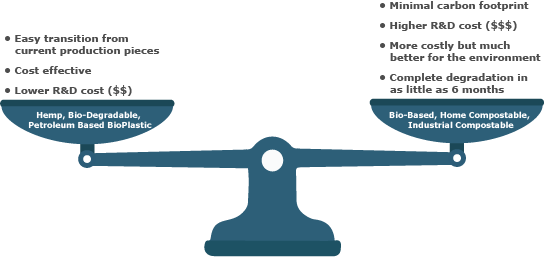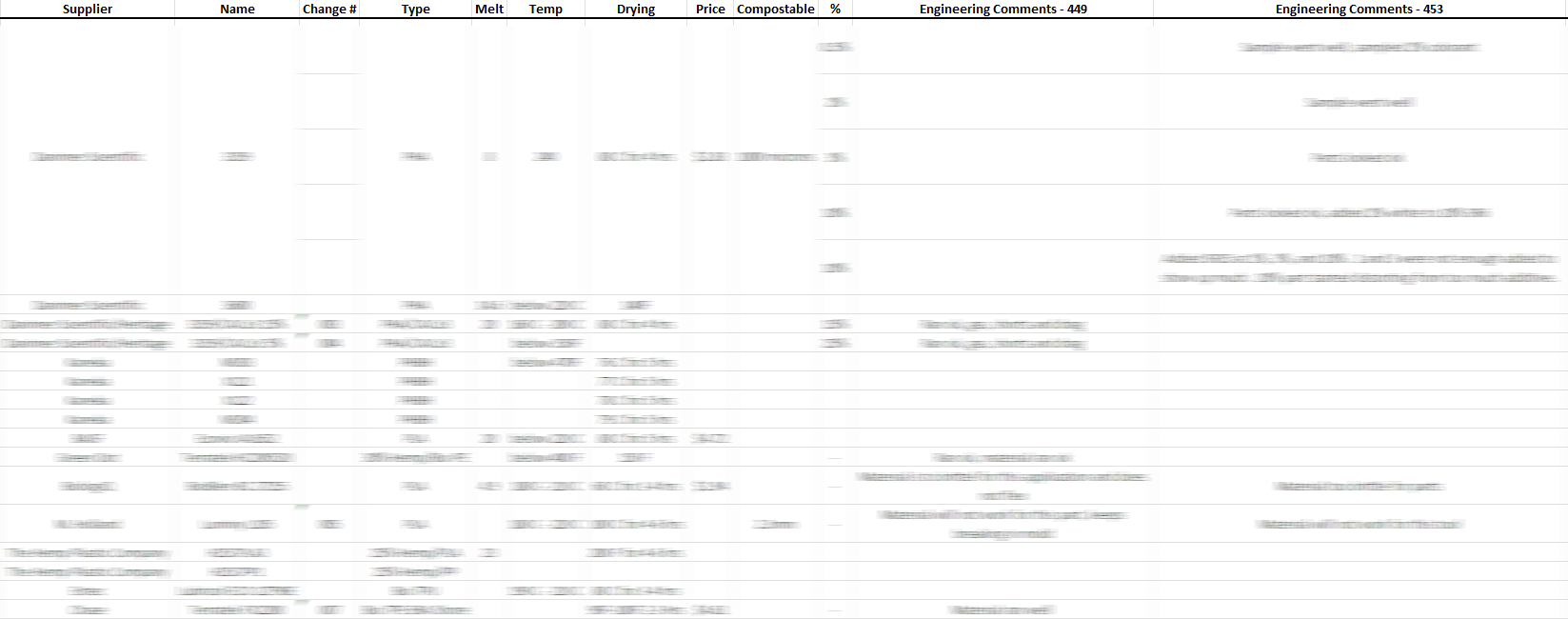Data Driven Consulting
At Green World, we make it easy for you to generate a path forward to sustainability. Contact one of our sales reps for more information!
Data Analysis
We let the data speak for itself by using standard key metrics to help you make the best decision for your transition to bio polymers!
Designs of Experiment
Injection Molding Projects have three inherent goals: performance, production efficiency, and reliability for the end user.
Data Driven Consulting
For many organizations, one of the biggest roadblocks to transitioning to sustainability is simply a lack of understanding where to begin the process. Fortunately, at Green World Products, we have spent the last 5 years doing the homework for you! We can help walk you through what makes sense for your long-term strategy for any new or existing product in your organization. Our team works daily to collect and report out data for multiple applications produced in multiple ways in order to help you make the best, most educated decision on new tooling for your product. Questions? Contact our sales team here.

Data Analysis
Our development team at Green World uses a very standardized set of key metrics specific to standard plastics in order to compare your new Bio product to its petroleum plastic counterparts. By doing this, we can ensure the best bio polymer blend and help you determine your best course of action and make educated decisions on both part function and piece price to get to the next steps to get your product to market.
Metric 1 = Flexural Modulus: Bio Resin 1 vs. Standard Polymer (91%)
Metric 2 = Tensile Strength: Bio Resin 1 vs. Standard Polymer (72%)
Metric 3 = Melt Mass Flow: Rate (MFR) Bio Resin 1 vs. Standard Polymer (66%)
Metric 4 = Cycle Time: Bio Resin 1 vs. Standard Polymer (68%)
Metric 5 = Material Cost: Bio Resin 1 vs. Standard Polymer (55%)
Designs of Experiment (DOE)
Injection Molding Projects have three inherent goals: performance, production efficiency, and reliability for the end user.
To reach these goals, Scientific Process Engineers utilize Design of Experiments (DOE) to identify flaws in the process that could cause defects or failures.
WHAT ARE DESIGN OF EXPERIMENTS?
A Design of experiment, or DOE, is a branch of applied statistics that uses input and output variables in controlled tests to determine certain values, such as part failure probability.
For Engineers trained in Scientific Molding, a DOE matrix is key in decision-making since it reflects the sum and substance of the entire DOE process. DOE gathers statistical evidence through multiple measurements and balances them with external influences to run analysis and collect data.
A DOE allows engineers to accurately retrace steps, resolve any contradictions, and determine next steps — either recommended changes or further required testing.
PERFORMANCE, PRODUCTION EFFICIENCY, AND RELIABILITY
DOE gives custom injection molders the ability to find the ideal process window, and better understand the result of having and maintaining it, thus providing us with desired outcomes of the three specific goals:
PERFORMANCE
Product and/or process design sensitivities and potential changes are revealed when DOE evaluates factors sometimes overlooked by product engineers — such as materials and injection molding settings (injection speed, melt temperature, cooling, etc.).
The thorough process of a DOE can help us determine whether a specific BIO blend will behave similarly to a standard polymer. This helps us decide which bio polymer or blend would be the best fit for your application.
PRODUCTION EFFICIENCY
Through DOE, design flaws can be averted prior to manufacturing since process outcome is verified. It can also mitigate the risk of faulty plastic pieces or defects from inadvertently reaching the production floor, as testing can reveal which manufacturing changes need to be made to correct missteps.
RELIABILITY
DOE is versatile and can be applied to gather data about the ability of plastic parts to withstand any number of environmental conditions. This can reveal design flaws and failure risks, while providing ample time for modifications that translate to better, more reliable products going to market. This includes, but not limited to, degradation timing for biopolymers.

